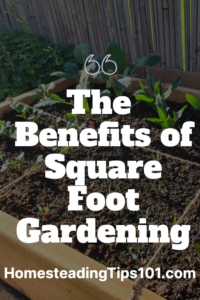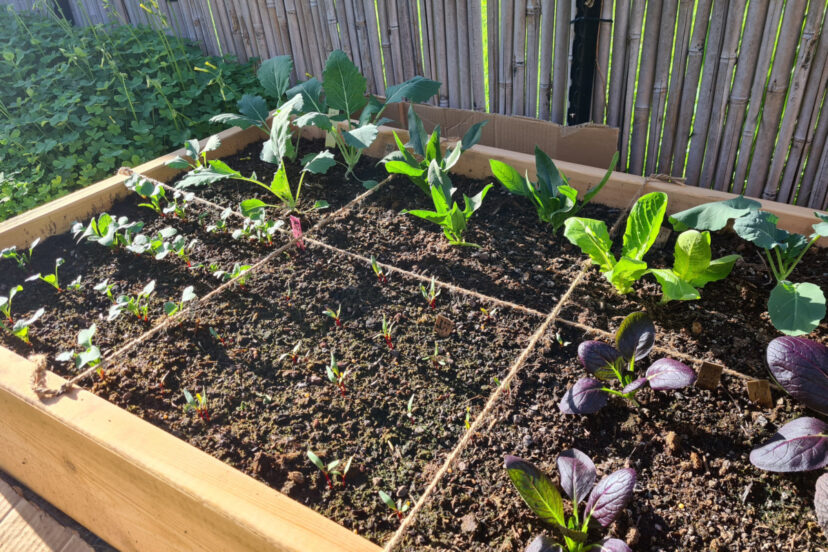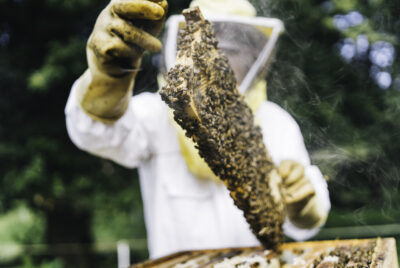The Benefits of Square Foot Gardening
"We may earn a commission from purchases made using our links. Please see disclaimer."
Start Your Own Square Foot Garden and Reap the Benefits
As a longtime gardening enthusiast, I believe square foot gardening is one of the most productive and user-friendly gardening methods available. If you want to grow more fresh produce in less space with less work, square foot gardening is the way to go. Let me explain what square foot gardening involves and how you can create your own superb square foot garden!
What is Square Foot Gardening?
 Square foot gardening is a specialized gardening technique that divides growing space into small, 1-foot squares. Within each 12″x 12″ square, a certain number of plants are densely planted based on the mature size of that crop. For example, you might plant 16 carrots or 1 cabbage in each square.
Square foot gardening is a specialized gardening technique that divides growing space into small, 1-foot squares. Within each 12″x 12″ square, a certain number of plants are densely planted based on the mature size of that crop. For example, you might plant 16 carrots or 1 cabbage in each square.
Additionally, this intensive planting style helps maximize production in a small footprint and results in very high yields. Square foot gardens are typically raised beds between 6-12 inches deep, filled with a fast-draining soil blend. The blend called “Mel’s Mix” is 1/3 compost, 1/3 peat moss or coconut coir, and 1/3 vermiculite or perlite.
A grid is placed over the bed to mark off the planting squares for easy visualization. Square foot gardening was pioneered in the 1970s by Mel Bartholomew and has grown in popularity for its efficiency and productivity.
Reasons to Try Square Foot Gardening
I’ve been using square foot gardening methods for years now, and I’m consistently amazed by the benefits. Here are some of the top reasons you should give it a try:
More Efficient Use of Space
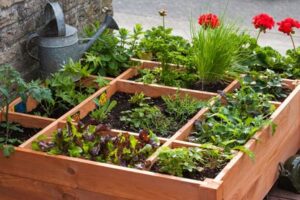 By planting intensively in grids, you can grow up to 4 times more produce in the same amount of space compared to traditional row gardening! It helps prevent wasted space between plants. The intensive planting ensures every bit of garden space is put to good use.
By planting intensively in grids, you can grow up to 4 times more produce in the same amount of space compared to traditional row gardening! It helps prevent wasted space between plants. The intensive planting ensures every bit of garden space is put to good use.
With square foot gardening, you can produce more food in less space. The grid system helps you maximize planting in each square foot bed.
Don’t waste precious garden area with this hyper-efficient gardening method. Make the most of your yard by intensely planting plots in square foot sections.
Less Watering and Maintenance
The shallow raised beds reduce water needs by up to 70% compared to in-ground beds. Densely planted squares shade and protect the soil, retaining moisture better. Less weeding is required too. You’ll save time and effort on garden chores with square foot gardening.
The structured beds and grids simplify maintenance like watering and weeding. Shallow beds and close planting help soil retain moisture, cutting water usage. Smart garden design reduces your workload so you can relax more. Spend less time sweating in the garden and more time enjoying the fruits of your labor.
Excellent for Small Yards
 Even if you only have a patio or balcony, you can grow a sizeable amount of produce with a few square foot beds. It’s the perfect solution for urban gardening. If you have some additional room, the garden layout is very important as I discussed in a previous article.
Even if you only have a patio or balcony, you can grow a sizeable amount of produce with a few square foot beds. It’s the perfect solution for urban gardening. If you have some additional room, the garden layout is very important as I discussed in a previous article.
With just a bit of space, you can grow food for your family. You don’t need acres of land to reap a bountiful harvest. Careful planning allows for big yields even in petite gardens.
Small yard? No problem! Square foot gardening can help anyone grow food with limited room. Maximize your urban garden or patio with these space-saving techniques.
Higher Yields in Small Spaces
Careful planning allows you to increase yields per square foot. More plants packed into a bed means harvesting more from less space. Get the biggest harvest possible no matter your garden’s size. Intensive planting boosts productivity from every square foot.
Grow more fruits and veggies for your family with less actual garden space. Maximize your yield by packing each bed as densely as possible. With smart intensive gardening, you can produce bountiful harvests in compact spaces.
Easy Weed Control
 Weeding is quick and easy by mixing in vermiculite to prevent soil compaction. I find that fewer weeds also grow when the soil is never walked on. Say goodbye to endless hours of backbreaking weeding. Spend less time fighting weeds and more time enjoying your garden.
Weeding is quick and easy by mixing in vermiculite to prevent soil compaction. I find that fewer weeds also grow when the soil is never walked on. Say goodbye to endless hours of backbreaking weeding. Spend less time fighting weeds and more time enjoying your garden.
The structured beds and designated footpaths cut down on unwanted weeds. Prevent soil compaction and suffocate weeds naturally with vermiculite. Save your back and sanity from tedious garden weeding with these handy methods.
Promotes Healthy Soil
Mel’s Mix soil blend stays loose and aerated while providing nutrients. Alternating crops each season replenishes the soil. Reap the benefits of enriched, loose soil perfect for plant growth. Mel’s Mix gives plants the ideal growing medium for vibrant health.
Alternating plant families regenerates the soil each season naturally. The custom blend keeps soil light and nutrient-rich without chemicals. Give your plants the root environment they need to thrive with this soil formula.
How to Start Square Foot Gardening
Ready to jump into square foot gardening? It’s easy to get started. Just follow these steps:
Design Your Garden Layout
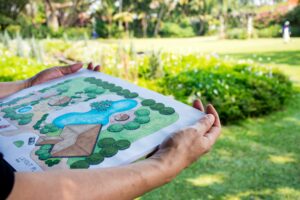 I decide how many beds I want and where they will be placed to get sufficient sunlight, at least 6 hours per day. I also highly suggest you do the same. Often a U-shaped layout works well. Map out your ideal garden design on paper first. Plan where your square foot beds will be situated ahead of time. Determine how many beds you can fit in your yard layout and sunlight.
I decide how many beds I want and where they will be placed to get sufficient sunlight, at least 6 hours per day. I also highly suggest you do the same. Often a U-shaped layout works well. Map out your ideal garden design on paper first. Plan where your square foot beds will be situated ahead of time. Determine how many beds you can fit in your yard layout and sunlight.
Proper planning of your garden makes planting and care much simpler. Sketch out different garden shapes and bed arrangements before you break ground.
Build or Obtain Raised Beds
Construct a square wooden frame for each bed. Standard size is 4×4 feet but sizes can vary. Or you can buy pre-made beds online or at a garden store. Constructing your own raised beds allows customization. Build beds to perfectly fit your space from readily available materials.
Purchase pre-fab beds for ease or make your own for total control. Assembly is simple with basic woodworking tools and minimal skills required. Let your creativity run wild when designing and constructing customized raised beds.
Make Mel’s Mix Soil Blend
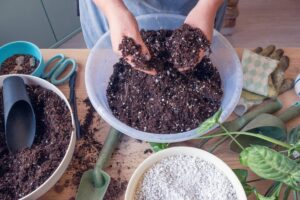 Blend equal parts peat moss, vermiculite, and compost into a large container. Then fill your raised beds with this mix to around 6 inches deep. Mel’s secret soil blend is the key to success.
Blend equal parts peat moss, vermiculite, and compost into a large container. Then fill your raised beds with this mix to around 6 inches deep. Mel’s secret soil blend is the key to success.
The perfect soil mix of peat, vermiculite, and compost supports plant health. Blended soil provides the ideal growing environment for gardening success.
Follow Mel’s recipe precisely for a loose, nutrient-rich planting medium. Don’t skip this vital step – quality soil leads to an abundant harvest.
Add Grids to Mark Planting Squares
Use string, wood strips, or metal bars to divide the beds into 1-foot squares. This delineates the planting areas. Grids make planting and care easy to visualize. Dividing beds into squares simplifies gardening tasks like spacing.
The grids aid in planning where each plant variety will go. Clear squares help maximize production from every inch. Visually delineating squares streamlines planting and organization in the garden.
Select Crops to Plant
 Refer to a planting chart to determine how many of each crop fits into each 1 sq. ft. Choose a mix of veggies, herbs, and flowers. Pick the perfect plants for your family’s tastes. Determine the right number of each plant based on spacing guides.
Refer to a planting chart to determine how many of each crop fits into each 1 sq. ft. Choose a mix of veggies, herbs, and flowers. Pick the perfect plants for your family’s tastes. Determine the right number of each plant based on spacing guides.
Mix edible and ornamental plants for form and function. Research companion planting guides for crop arrangements. Carefully select vegetables, herbs, and flowers with your family’s preferences in mind.
Strategize Crop Rotation
I plan crop placement so that families of plants are rotated through each square over time for soil health and recommend this as the way you should start. Crop rotation prevents disease and nutrient deficiencies. Rotating plant families replenishes nutrients and prevents soil issues.
Shift crop locations annually for improved plant vigor and yields. Proper crop succession avoids depleting the soil of nutrients. Don’t grow the same crops repeatedly in one spot for the healthiest garden.
Plant Densely Within Squares
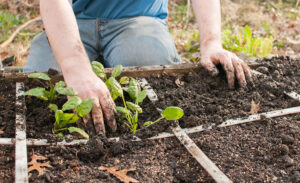 Don’t space out plants- pack them densely within each square to maximize production. Place taller plants on the north side. Dense planting results in higher yields per square foot. Pack each square foot tightly for increased productivity per space.
Don’t space out plants- pack them densely within each square to maximize production. Place taller plants on the north side. Dense planting results in higher yields per square foot. Pack each square foot tightly for increased productivity per space.
North sides get less sun, so place taller plants there. Intense spacing ensures you get the most from each planting area. Don’t spread plants out – dense planting amps up your garden’s production.
Use Vertical Space Wisely
Use trellises, cages, poles, and fences for vertical growing of tomatoes, beans, cucumbers, and peas. Grow up with vertical gardening techniques. Use trellises and cages to support vining crops upwards. Take advantage of vertical space for greater yields without expanding your footprint.
Try upward growing methods for plants like pole beans and tomatoes. Don’t let plants sprawl out – train them upwards for bonus harvests.
Provide Water and Nutrients
 I use about 1 inch of water per week which is all that is needed. Use organic fertilizer or compost tea to feed plants mid-season. Proper watering and feeding keep plants thriving. Consistent watering avoids over or under-watering plants.
I use about 1 inch of water per week which is all that is needed. Use organic fertilizer or compost tea to feed plants mid-season. Proper watering and feeding keep plants thriving. Consistent watering avoids over or under-watering plants.
Fertilize mid-season for a nutrient boost to blooming plants. One inch of water weekly is typically sufficient for most gardens. Monitor soil moisture and nourish plants when needed for health.
Give your garden the right amount of water and food for lush growth.
Maximizing Success with Square Foot Gardening
With a bit of planning and strategic gardening methods, you can get the most out of your square foot garden. Here are some useful tips:
Companion Planting Strategies
Place complementary plants together, like radishes and lettuce. Avoid incompatible plants like potatoes and tomatoes to prevent disease. Companion planting boosts growth and deters pests. Strategically place complementary plants together for mutual benefits.
Keep incompatible plant families apart to prevent spreading issues. Interplant beneficial companion crops for natural pest control. Follow guides to optimize plant pairings and avoid conflicts between crops.
Using Row Covers and Shade Cloth
 Protect plants from pests and weather extremes using fabric covers. This can extend seasons and prevent insect damage. Row covers are a simple way to protect plants. Safeguard seedlings and fruits with fabric barriers from pests and weather.
Protect plants from pests and weather extremes using fabric covers. This can extend seasons and prevent insect damage. Row covers are a simple way to protect plants. Safeguard seedlings and fruits with fabric barriers from pests and weather.
Extend growing seasons in cold climates with added insulation properties. Prevent insect and critter damage on vulnerable plants with covers. Use shade cloths to cool plants in excessively hot or sunny conditions.
Staking and Trellising Techniques
Use stakes, cages, and vertical supports to keep vining plants tidy and upright. This saves space. Proper staking prevents sprawling and wasted space. Trellises and cages support unruly vining plants neatly upwards. Staking techniques like teepees save space while minimizing disease.
Prevent fallen and rotting fruits by securing heavy produce on supports. Keep plants contained and prevent wasted space through strategic staking and trellising.
Tips to Prevent and Control Pests
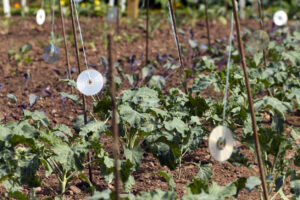 Diatomaceous earth, neem oil, and insecticidal soap help control pests. Hand-pick large insects. Avoid chemical pesticides. Control pests without chemicals for a natural garden. Deter bugs and insects naturally with organic sprays and powders.
Diatomaceous earth, neem oil, and insecticidal soap help control pests. Hand-pick large insects. Avoid chemical pesticides. Control pests without chemicals for a natural garden. Deter bugs and insects naturally with organic sprays and powders.
Remove large pests quickly by hand before they spread. Keep plants vigorous to avoid being susceptible to diseases and infestations. There are many effective organic options to protect plants from pests.
Strategies to Promote Pollination
Attract pollinators like bees by planting flowers among and around beds. Native plants work best. Provide water sources too.
Square foot gardening has allowed me to sustainably grow an abundance of organic fruits, veggies, and herbs in my small yard, and I know it can do the same for you! With a bit of planning upfront, these gardening methods save time and provide high yields season after season. Give it a try this year – your garden will thank you! Let me know if you have any other questions. I’m always happy to share my passion for square foot gardening!
Conclusion
As I have shown, square foot gardening is an ingenious method that allows you to intensively grow more food in less space. With its use of raised beds, specialized soil mixes, and gridded square foot planting, square foot gardens are easy to manage and deliver excellent results. So whether you have a tiny urban yard or acres in the countryside, embracing square foot gardening techniques can help you successfully grow an abundant harvest with less work compared to traditional gardening. Give it a try this gardening season and see the bounty you can produce!
FAQs
What are the best crops for square foot gardening?
Some top crops are lettuce, onions, carrots, radishes, beets, spinach, Swiss chard, kale, beans, peppers, eggplant, dwarf tomatoes, and herbs like basil.
Can I convert my existing garden to square foot gardening?
Yes! Simply build raised beds on top of the soil and fill them with Mel’s mix. The raised beds prevent soil compaction.
Is square foot gardening good for beginners?
Absolutely! After all the simplistic methods and small space requirements make it very beginner-friendly compared to traditional row gardening.
What size should a starter square foot garden be?
For beginners, start with just one or two 4×4-foot raised beds. This allows you to get the hang of it without too much initial investment.
Can I do square foot gardening without building raised beds?
While raised beds are recommended, a square foot garden can be done by gridding off sections in an existing in-ground garden. The soil may just need some amendment.
